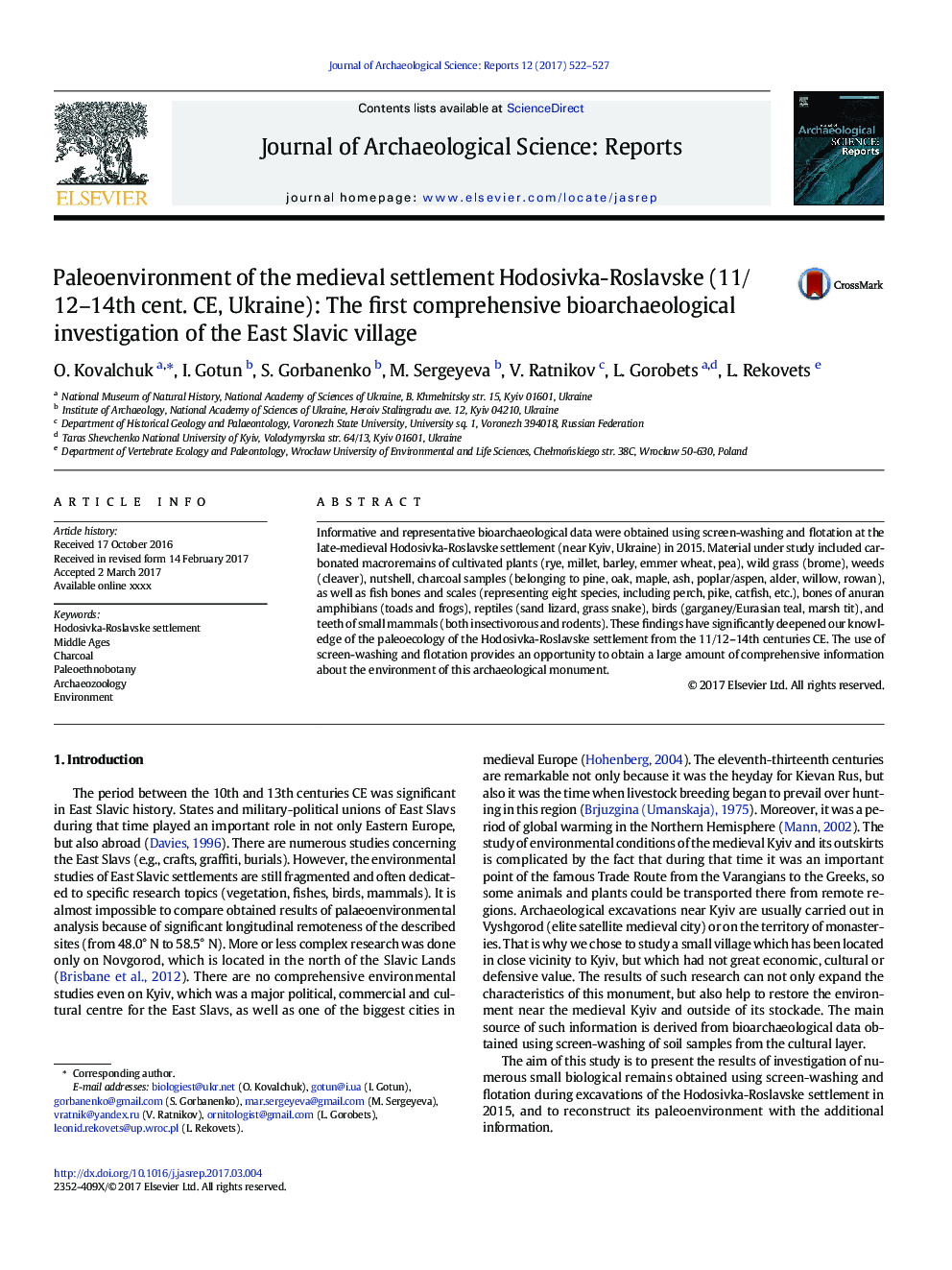| Article ID | Journal | Published Year | Pages | File Type |
|---|---|---|---|---|
| 5112515 | Journal of Archaeological Science: Reports | 2017 | 6 Pages |
Abstract
Informative and representative bioarchaeological data were obtained using screen-washing and flotation at the late-medieval Hodosivka-Roslavske settlement (near Kyiv, Ukraine) in 2015. Material under study included carbonated macroremains of cultivated plants (rye, millet, barley, emmer wheat, pea), wild grass (brome), weeds (cleaver), nutshell, charcoal samples (belonging to pine, oak, maple, ash, poplar/aspen, alder, willow, rowan), as well as fish bones and scales (representing eight species, including perch, pike, catfish, etc.), bones of anuran amphibians (toads and frogs), reptiles (sand lizard, grass snake), birds (garganey/Eurasian teal, marsh tit), and teeth of small mammals (both insectivorous and rodents). These findings have significantly deepened our knowledge of the paleoecology of the Hodosivka-Roslavske settlement from the 11/12-14th centuries CE. The use of screen-washing and flotation provides an opportunity to obtain a large amount of comprehensive information about the environment of this archaeological monument.
Related Topics
Social Sciences and Humanities
Arts and Humanities
History
Authors
O. Kovalchuk, I. Gotun, S. Gorbanenko, M. Sergeyeva, V. Ratnikov, L. Gorobets, L. Rekovets,
